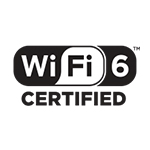 The FCC today freed up 1200 MHz of spectrum in the 6 GHz band for unlicensed use. The spectrum is expected to be used for Wi-Fi and for fixed wireless broadband. The latter is most likely to be deployed in rural areas.
The FCC today freed up 1200 MHz of spectrum in the 6 GHz band for unlicensed use. The spectrum is expected to be used for Wi-Fi and for fixed wireless broadband. The latter is most likely to be deployed in rural areas.
The latest generation of Wi-Fi known as Wi-Fi 6 has the potential to be more than two and a half times faster than previous generations, but “to take advantage . . ., we need more mid-band spectrum,” observed FCC Chairman Ajit Pai at today’s monthly FCC meeting, where the report and order freeing up the spectrum was approved unanimously.
Today’s decision increases spectrum available for Wi-Fi in the U.S. by a factor of five, Pai noted. The Wi-Fi Alliance called the move “monumental.”
“By making 6 GHz available for unlicensed use, the FCC has secured the future of Wi-Fi,” said Edgar Figueroa, president and CEO, Wi-Fi Alliance in a press release. “6 GHz access is a seminal development for connectivity and provides Wi-Fi more capacity to deliver groundbreaking use cases and to unlock novel new Wi-Fi applications.”

6 GHz Unlicensed Spectrum
The 6 GHz band includes spectrum between 5.925 and 7.125 GHz. As a fact sheet included in a draft of the 6 GHz unlicensed spectrum report and order explains, the order authorizes:
- Indoor low-power operations over the full 1200 MHz
- Standard-power indoor and outdoor operations in 850 MHz of the band when used with an automated frequency coordination (AFC) system to prevent standard power access points from operating where they could cause interference to incumbent services
Incumbent services include point-to-point microwave links and broadcast auxiliary and cable television relay licenses.
Also adopted today was a notice of proposed rulemaking (NPRM) that seeks comment on whether to permit very low-power devices to operate indoors and outdoors across the 6 GHz band to support high data rate applications such as augmented and virtual reality devices. The NPRM also seeks comment on whether to increase the power at which low-power indoor access points may operate without an AFC system.
Although commissioners at today’s meeting emphasized Wi-Fi applications of the 6 GHz band, the new spectrum’s impact on fixed wireless broadband also could be dramatic.
“We hope that for small rural innovators such as WISPs, the power levels in the order mean they’ll have more bandwidth to grow their businesses, develop new transmission techniques such as fixed 5G and, perhaps most importantly, bridge the rural digital divide, providing millions of rural Americans new options and tools to obtain the same prosperity and safety their urban counterparts expect and enjoy,” said Wireless Internet Service Providers Association (WISPA) President and CEO Claude Aiken in a prepared statement.


